Kinetic Facade Design
Integrating interactive kinetic façade design with colored glass to improve daylight performance based on occupants’ position
Seyed Morteza Hosseinia, Masi Mohammadia, Torsten Schroderb, Olivia Guerra-Santina
a Smart Architectural Technologies, Department of the Built Environment, Eindhoven University of Technology, Netherlands
b Architectural Design and Engineering, Department of the Built Environment, Eindhoven University of Technology, Netherlands
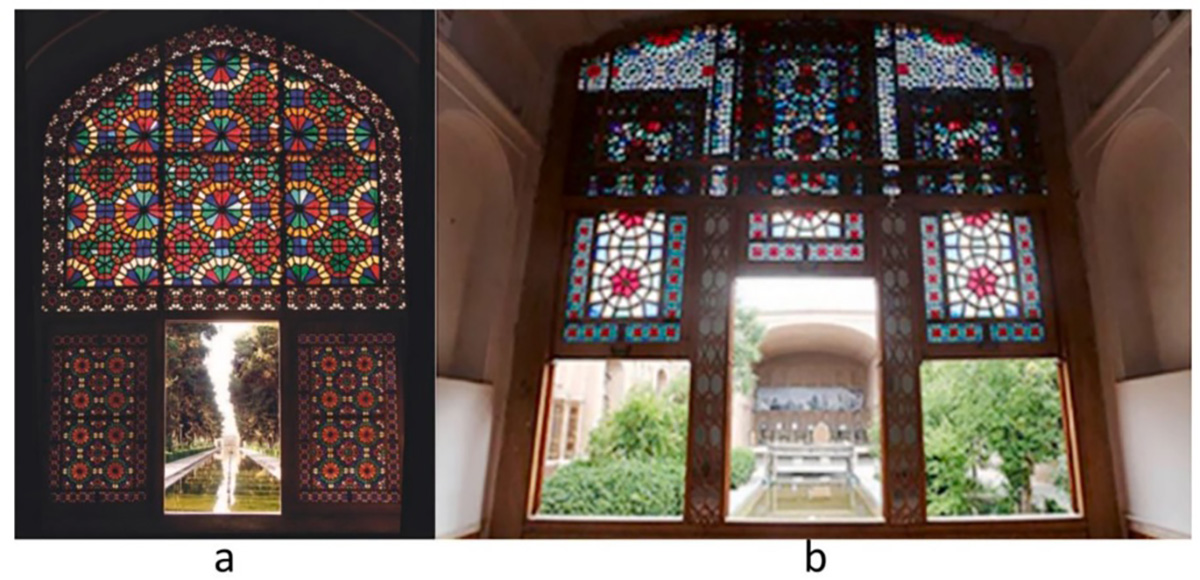
Fig. 1. a) Orosi window in Dowlat Abad Garden Iran, b) Vertical movement of Orosi window for controlling daylight and providing airflow.
The dynamic nature of daylight and occupant’s position can cause some issues such as heat gains and visual discomfort, which need to be controlled in real-time operation. Responsive facades have been pervasively used for preventing daylight glare and meeting daylight performance requirements.
However, some passive strategies such as the colored glass of the Orosi typical architectural elements used in Iranian central courtyard buildings have the potential to filter excess daylight, as well as providing other functions such as aesthetics and privacy. This paper explores, for the first time, the possibility of coupling a kinetic façade with colored glasses to improve the daylight performance.
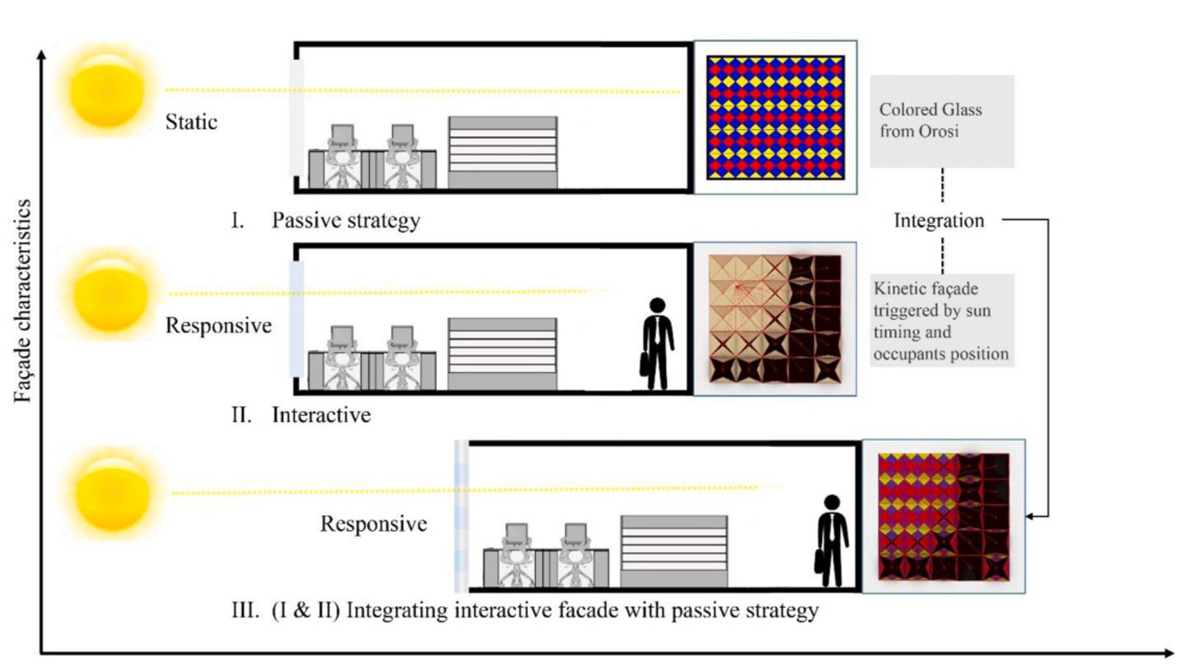
Fig. 2. Innovative integration between colored glass from Orosi and interactive kinetic façade triggered by sun timing and occupant position.
This research builds on a combination of relevant literature and parametric simulation to investigate the development of integration of colored glass from Orosi with interactive kinetic façades, triggered by sun timing and occupants’ positions. In total, 72 interactive kinetic façade cases are parametrically simulated, and their daylight performance is evaluated through climate-luminance based metrics.
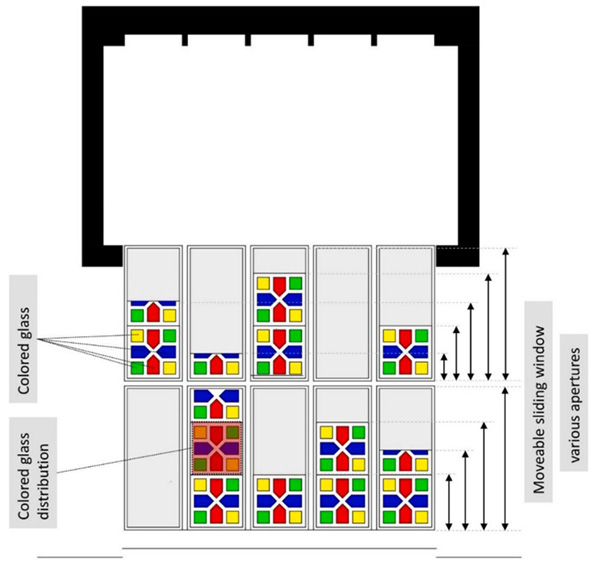
Fig. 3. Combination of elevation (bottom) and plan (top) illustration of movable colored glass apertures concept which control daylight with kinetic movement. Adapted from.
The simulation results confirm the high performance of the interactive kinetic facades for improving daylight performance regarding a base case. The integrated interactive kinetic façade with colored glass provides a real-time adaptation of the multifunctional passive strategy to sun timing and occupants’ position.
The integrated interactive kinetic façade with colored glass which uses parametric decentralized and hierarchical rotating (0–45°) movements, shows more improvement in daylight performance compared to other cases based on climate-luminance based metrics evaluation.
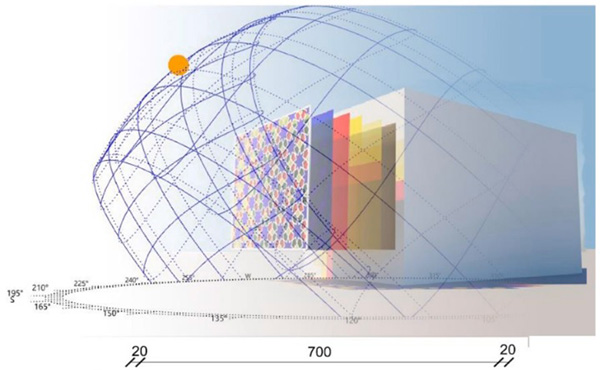
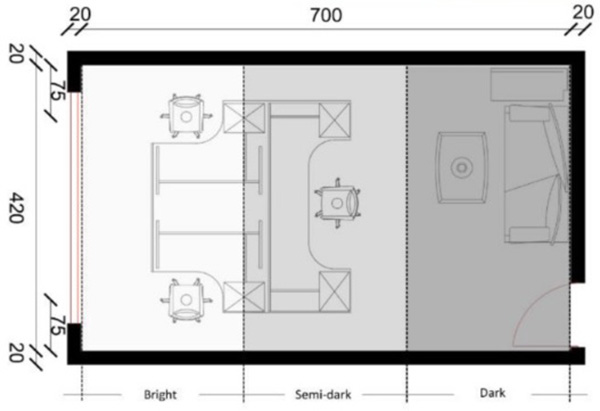
Fig. 4. Test room model for daylight performance simulation with colorful glasses and Orosi. Adapted from.
The operation of buildings contributes to approximately one-third of the global energy use and a similar share to the greenhouse gas emission. Several building façade designs have been developed to provide comfortable conditions for occupants.
These facades interact with their ambient environment using renewable energy sources on or near the buildings. Applying passive strategies in the early stage of design, using smart functions, leads to improve occupants’ comfort and decrease energy consumption by controlling the intensity of solar radiation. Efficient solar design as a main passive strategy can decrease heat gains and visual glare improving visual and thermal comfort.
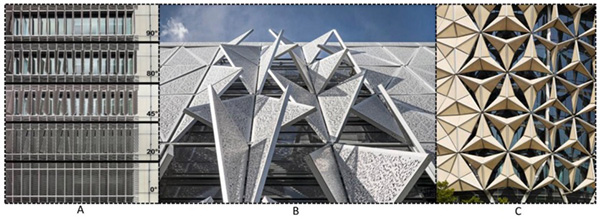
Fig. 5. A) Thysse Krupp cube, SDU Campus, Al Bahr Tower.
The passive design of buildings, employs orientation, geometry, shape, layout compactness, opening characteristics and material as factors, influencing occupants’ comfort conditions. However, active technology has potential to improve the control of buildings employing multifunctional systems, and automatic, responsive and reconfigurable components to meet users’ comfort.
For example, the kinetic interactive façades of al-Bahr towers and Helio Trace Centre of Architecture, by using responsive and smart components, reduce solar heat gains by 50% and 81% respectively, when compared with fixed façades. Therefore, integrating passive strategies with active technology in the shape of kinetic façades has the potential to improve occupants’ comfort in real-time, responding to environmental parameters.
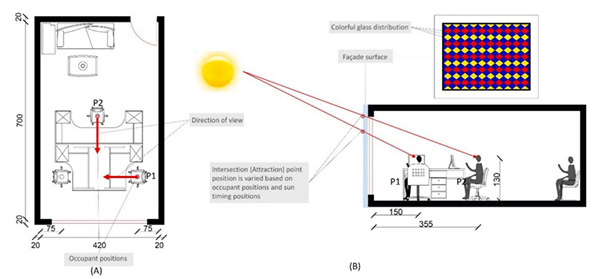
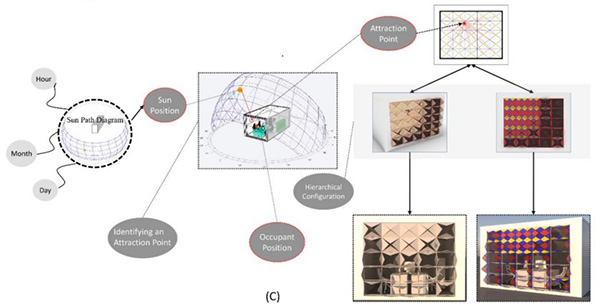
Fig. 7. Interaction of the kinetic façades with sun timing position and occupant position based on the attraction point location and parametric decentralized façade apertures logic resulting in hierarchical modular elements configuration.
Natural light, as a renewable and permanent source, has positive effects on building occupants, including psychological, mental and physiological. Nonetheless, the dynamic nature of daylight causes some issues such as heat gains and visual discomfort, which need to be controlled in real-time operation.
Although responsive components have been pervasively used for regulating daylight glare and daylight performance, some passive strategies have not been investigated such as colored glass in Iranian central courtyard building which provides an opportunity to be integrated with kinetic façade to improve visual comfort. This application offers two important reactions response to daylight: real-time responding and simultaneous filtering.
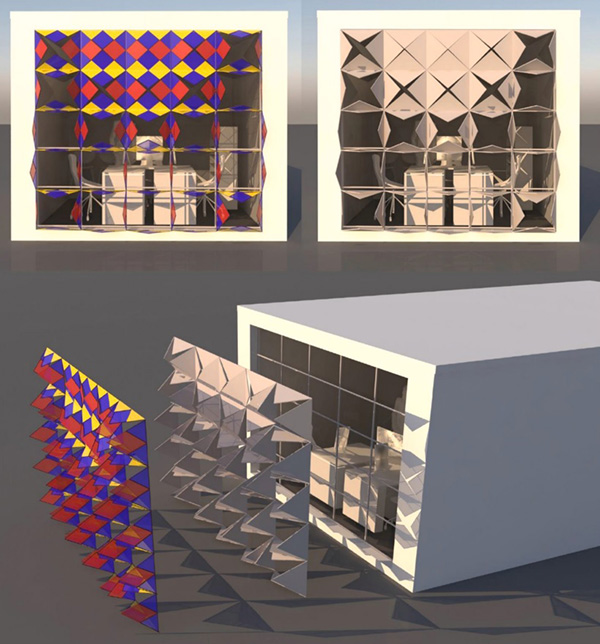
Fig. 8. Test room model for three cases comprising window frame, interactive kinetic façade (IKF) and integrated interactive kinetic façade with colored glass (IIKFCG).
A closer look at the Iranian latticed window with colorful pieces of glass called Orosi reveals their high daylight performance as well as other functions such as aesthetic, privacy and psychological effects. It appears that applying colored glass in the window and estimating the appropriate percentage of each colored glass, depend considerably on space function, material, user preferences, local climate and design purpose.
Therefore, this paper explores, for the first time, the possibility of coupling a kinetic façade with colored glasses to improve the daylight performance. This research aims to investigate the integration of colored glass from Orosi with an interactive kinetic façade triggered by sun timing and occupant positions.
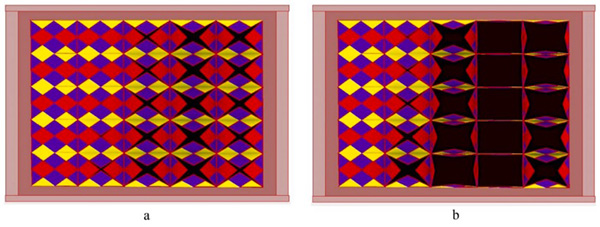
Fig. 10. Integrated interactive kinetic façade with colored glass (IIKFCG) using parametric decentralized façade configuration: a) Pivot-rotation 0–45° and b) Pivotrotation 0–9°.
In this study, we have explored the function of Orosi elements in Iranian traditional buildings and distinguished the most applied colored glasses. In the next phase, we developed, for the first time, the possibility of coupling a kinetic façade with colored glasses to improve the daylight performance.
This research aims to investigate the integration of colored glass from Orosi with interactive kinetic façade triggered by sun timing and occupant’s positions. Since the dynamic nature of daylight causes some issues such as heat gain and visual discomfort, real-time responding and simultaneous filtering are useful to avoid these issues.
Therefore, integrating passive strategy with active technology in the shape of kinetic façade has the potential to improve daylight performance with real-time responding to environmental parameters.




























Comments